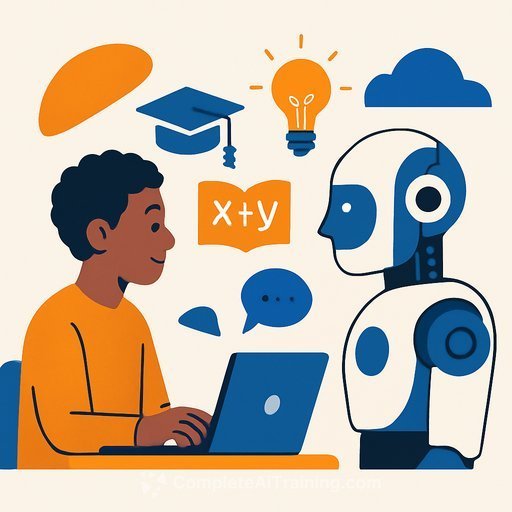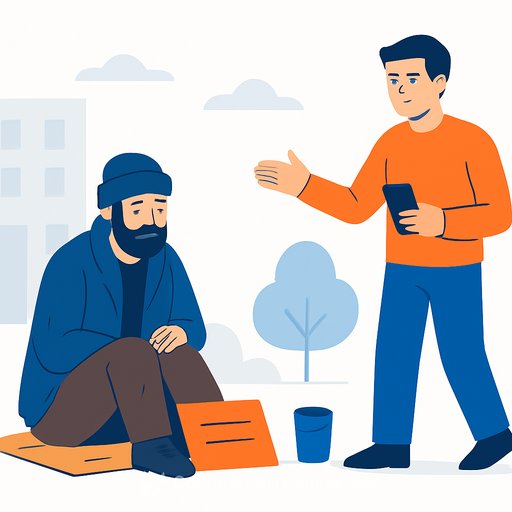Inside an AI-First School: What Educators Can Take From Alpha's Model
Austin's Alpha School runs a bold experiment: AI guides core academics for fourth and fifth graders while adults serve as "guides," not traditional teachers. The promise is simple - let software adapt to each learner's pace, then use human time for coaching, projects, and life skills.
Tuition starts at $40,000. The school reports top 1% performance on standardized tests and has grown to 16 campuses. Supporters applaud the focus and pace; skeptics question cost, evidence, and equity.
How the day is structured
- Morning (about 2 hours): Students work independently on science, math, and reading using AI-driven software. Pacing and sequencing are individualized.
- Adults as "guides": Six-figure roles centered on motivation, focus, and coaching - not direct instruction.
- Afternoons: Projects, financial literacy, public speaking, and workshops that emphasize collaboration and communication.
- 1:1 coaching: Every student receives 30 minutes weekly of focused time with a guide.
What educators can borrow now
- Define where tech leads vs. where humans lead. Use adaptive tools for skill practice and progress visibility; reserve teacher time for feedback, small groups, and higher-order thinking.
- Short, intense academic blocks. Two hours of focused, distraction-free practice can outperform longer, unfocused periods.
- Weekly 1:1s with clear goals. Ten to thirty minutes per student with rubric-based check-ins can improve motivation and executive function.
- Afternoon "application" blocks. Projects tied to financial literacy and public speaking help transfer skills beyond test prep.
What Alpha's team says
Guide Luke Phillips: "I don't think [AI is] replacing, I think it's just working in tandem." Founder MacKenzie Price emphasizes connection: guides "are not teaching academic content, but they are connecting," including weekly one-on-ones and group workshops.
Concerns and open questions
- Evidence quality: Claims of top 1% scores are promising, but peer-reviewed, independent evaluations would strengthen confidence.
- Equity and access: A $40,000 price point limits who benefits. District pilots need pathways that do not widen gaps.
- Role clarity: If guides do not provide direct instruction, when and how is intervention delivered for students who need explicit teaching?
- Over-reliance on screens: Safeguards for attention, well-being, and social learning are essential.
- Data privacy: Clear policies for data use, storage, and model training must be non-negotiable.
Implementation playbook for public schools
- Start with a single grade and one subject. Pilot an adaptive math or reading tool during a 60-90 minute block; compare outcomes to a matched control group.
- Reframe staff roles. Assign teachers to coach cycles: goal-setting, progress checks, and small-group reteach. Train paraprofessionals as "guides" to reinforce routines and focus.
- Protect weekly 1:1s. Ten minutes per student with a simple agenda: goal, obstacle, plan, evidence.
- Make afternoons hands-on. Launch low-cost projects: school budget simulations, community presentations, or debate cycles to build speaking and financial literacy.
- Instrument the pilot. Track growth percentiles, time-on-task, assignment completion, small-group minutes, and student well-being surveys.
Budget and staffing notes
- Software first: Begin with existing licenses; expand only after hitting growth targets.
- Role redesign over headcount growth: Shift duties so teachers focus on feedback and targeted instruction while aides manage routines and logistics.
- Professional learning: Train teams on data triage, small-group triggers, and coaching conversations.
Guardrails
- Assessment integrity: Confirm that practice platforms do not mirror assessment items. Separate teaching content from testing instruments.
- Privacy by default: Use vendor agreements aligned to state and district policy; disable data sharing for model training.
- Balance screens with people: Pair digital practice with discussion, peer review, and performance tasks.
Leadership signals to watch
The network has grown since 2014 and drew a recent visit from the Secretary of Education, reflecting national interest. Whether it scales beyond private settings will depend on cost controls, transparent evidence, and teacher partnership.
For deeper policy context
See the U.S. Department of Education's guidance on AI and teaching for procurement, privacy, and instructional use cases: AI and the Future of Teaching and Learning.
Upskilling your team
If you're building staff capacity around prompts, classroom workflows, and evaluation of AI tools, explore practitioner-focused training: AI courses by job role.
Bottom line
Alpha's model doubles down on two bets: AI for precise practice and humans for motivation and application. You can apply the strongest elements - focused blocks, weekly 1:1s, and project afternoons - without premium tuition, if you protect time, measure what matters, and keep humans at the center.
Your membership also unlocks:






